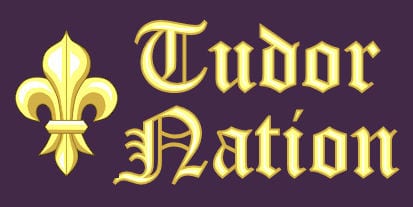Information about what England was like in 1500 can be found in primary and secondary sources dealing with the Tudor period. Records tend to deal mainly with the lives of the upper echelons of society and also with the capital city, London.
Population
In 1500 the population of England was about 3 million. Due to yearly outbreaks of plague and sickness the population stayed at about this number. There was a general shortage of labourers which meant wages were high and rents low. All classes therefore enjoyed a reasonable standard of living.
London
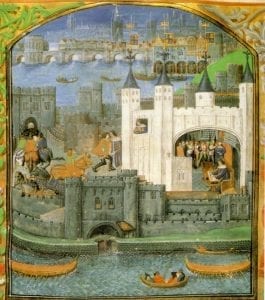
The only towns with a population over 10,000 were Norwich, Bristol, Newcastle and London.
The city of London had a population of around 60,000. It extended from Aldgate and the Tower of London in the east to Fleet Street and Temple Bar in the west. The village of Holborn was the northern extreme and the town of Southwark across the river marked the southernmost point. The only bridge across the river was London Bridge. St Paul’s Cathedral, on the top of Ludgate Hill, dominated the city. It was built in the Gothic style with a square Gothic tower.
The streets of London were narrow and dirty and the upper floors of the timber houses often overhung the roads. If a fire broke out, large areas of the city could be destroyed. If this happened the community worked together to rebuild lost buildings. The roads were not paved and became bogs when it rained.
Many of the inhabitants of London knew each other because the houses were packed so closely together. Noblemen, bishops and leading merchants all kept large establishments in the city. The church owned houses, tenements and plots of land all over the city. Merchants resented the dominance of the church in the city because there was a lack of premises from which to do business.
The twelve great companies: mercers, grocers, drapers, fishmongers, goldsmiths, skinners, salters, ironmongers, tailors, haberdashers, vintners and clothworkers dominated the political and social life of London. The aldermen and Lord Mayor of London were usually members of these twelve companies. Each trade had its own area. There were 52 goldsmiths in the Strand, the largest street in London, and the skinners’ workshops were found in Walbrook ward. Many leading members of these guilds were also members of the Merchant Adventurers. These men dealt in a variety of commodities and were agents for both imports and exports. They made frequent trips to Calais and Antwerp to haggle prices of wine, wool and cloth and quickly became very wealthy citizens.
Entertainment
On Sundays and feast days many Londoners used the surrounding fields for recreation. Football, hockey and handball were popular sports and were played at Spitafield, Moorfield and Smithfield. Longbow practice was available in all fields while Smithfield was the site of horsefairs and the burning of heretics. Annual fairs were held in the city where outdoor entertainers, mummers, minstrels and puppeteers performed.
Professional gamblers, minstrels and players could be found in the taverns. Although officially disapproved of, men from all walks of life could be found singing bawdy songs, applauding mummers and losing money at cards, shuffleboard, dice or tables (backgammon and draughts).
Housing
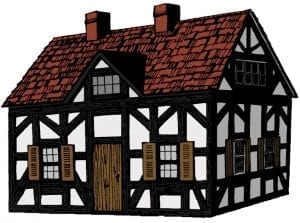
Wealthy English people could afford the best houses and many lived in two storey wattle and daub houses. To build a wattle and daub house, the builder had to construct a large timber frame. The spaces between the timbers were then filled with woven twigs called wattle. The twigs were then covered with a mixture of mud and clay known as daub which was left to bake hard. The wooden timber was coated with black tar to help preserve it and prevent it rotting. The daub was often painted with limewash to make it look whiter. The roof was then tiled. Houses were furnished with basic furniture – tables, chairs, and wooden beds.
Trade
The cloth trade was booming in England in 1500 and cloth could fetch a high price. Cloth was mainly produced in Somerset, The Cotswolds, East Anglia and Yorkshire. Clothiers from these areas travelled to the capital with their laden pack horses. They unloaded their wares in Blackwell Hall, Basinghill Street where the bales were sealed and weighed by market officials. The buyers had a monopoly for buying cloth and although clothmakers haggled prices were generally low. In a bid to make more money, many wealthy merchants bought their own country estates and filled the land with sheep so that they could control every stage in the manufacture of the cloth.
The increase in the Wool trade with Burgundy meant that the demand for wool had increased. As a result more land was used to enclose sheep and people were becoming concerned about the loss of agricultural land to sheep farming.
Travel
Travel was not easy in England in 1500 because most of the roads were dirt tracks which only remained visible and free from growth because of frequent use. Most carts and wagons had spiked wheels and blacksmiths usually set up their forges near the roads and made a good trade shoeing horses and repairing wheels. Travel was most hazardous in the winter months when rain or snow could obliterate the dirt tracks. Villages were few and far between and signposts a rarity. Travellers venturing into unknown areas would often employ a guide. People tended to travel in groups whenever possible for protection against being robbed by highwaymen.
In London, many rich people travelled on the River Thames. Wherries and rowing boats were able to be hired from river steps and landing stages. Most boats sat two people and were made comfortable with cushions and awnings. It cost one shilling to travel from St Paul’s Wharf to Greenwich Palace.
Employment and Unemployment Laws
All English men had to obey laws which controlled all aspects of their lives from the colour clothes each class was allowed to wear to the number of dishes each should have for dinner. In 1495 a law had been passed to regulate the number of hours a labourer could work. During the summer months (mid March to mid September) they would begin work by 5 am and work until 7 pm or 8 pm with a half hour break for breakfast and an hour for lunch. In the winter they would begin work at sunrise and work until sunset with the same breaks.
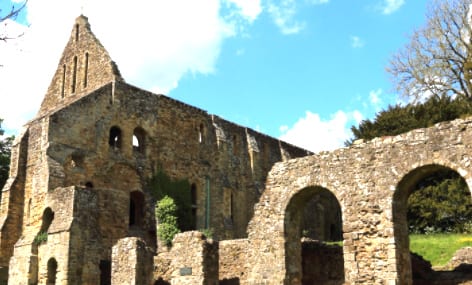
There was no support for those that did not work. Some were able to get help from the monasteries but others had no choice but to beg. There were also those that chose not to work but instead made a living from travelling from town to town begging or making a living from gambling. The Vagabonds and Beggars Act was introduced in 1494 to try to stop working people from being exploited. Vagabonds and beggars that were caught would be put in the stocks for three days and only be given bread and water. Unfortunately, the act did not distinguish between those who were unable to find work and those that deliberately avoided work.
Punishments
Most people tried to obey the law since punishments for breaking laws were harsh. All classes, except peers, were likely to be tortured during investigations. If they were found guilty of treason they would be hung, drawn and quartered. Only peers were given the luxury of beheading. Women of any class could expect to be burned at the stake if found guilty of either treason or the murder of their husbands.
Religion
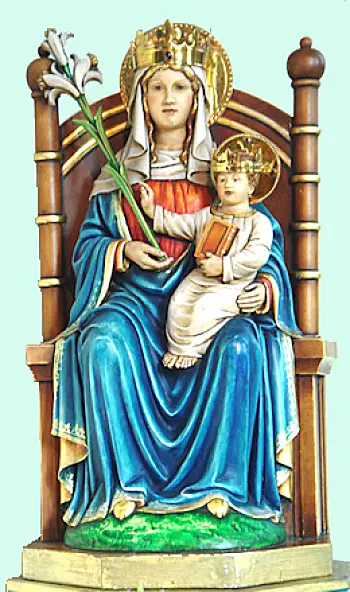
During the year there were 40 feast and Saints’ days. It was law that everyone attend church on Sundays and Holy days unless they obtained a special dispensation. It was forbidden to eat meat, butter or cheese on Fridays, Saturdays, during Lent, during Advent or on the eve of Holy days. People were able to obtain a dispensation to exempt them from a holy law but a fee had to be paid to the king and it was usually necessary to bribe the priest or clerk granting the dispensation. Many priests were corrupt and lived openly with concubines and had fathered children despite it being law that they remained celibate.
Most English people attended mass daily and truly believed the priest had the power to make the body of Christ. The tomb of Thomas Becket in Canterbury Cathedral and the shrine of our Lady at Walsingham were focal points for pilgrimages. These shrines had become very wealthy because of the large numbers of jewels and stones that had been left by pilgrims.
A very small number of people did not believe that the Catholic religion was the true religion. The Lollard Movement believed that every man should have the opportunity to read the Bible and interpret it as he saw fit. However, the authorities stated that these beliefs were heretical. Heretics were given the opportunity to recant their beliefs but if they refused they were burned at the stake.
Education
Education had become increasingly important in England by the year 1500 and most large towns had a grammar school. Here the sons of those that could afford to pay for schooling learned Latin grammar. A knowledge of Latin grammar was essential for merchants who wished to trade across Europe and also for those that wished to pursue a legal or religious career. Lessons started at sunrise and often did not finish until sunset. Pupils that did not complete their studies to the teacher’s satisfaction were punished, usually by being whipped.
First published 2017; updated and re-published Sept 23 2020 @ 12:24 pm – Updated –
Harvard Reference for What was England like in 1500?
Heather Y Wheeler. (2017 – 2022). What was England like in 1500? Available: https://www.tudornation.com/what-was-england-like-in-1500 Last accessed [date]
